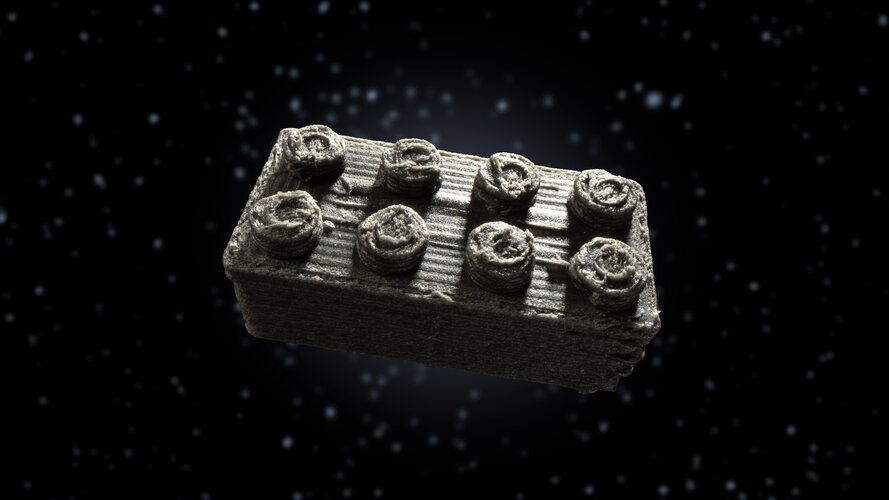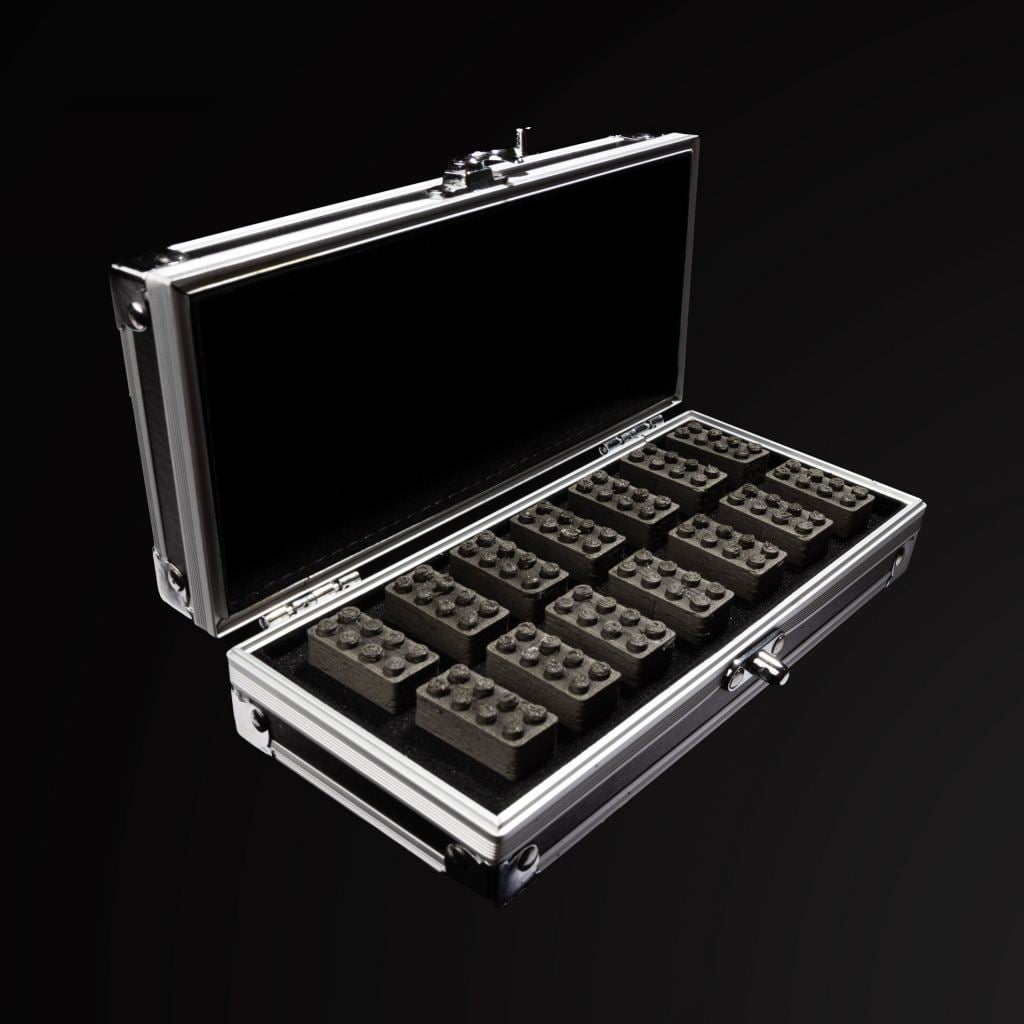There have been many proposals for building structures on the Moon out of lunar regolith. But here's an idea sure to resonate with creators, mechanical tinkerers, model builders and the kid inside us all.
What about using actual LEGO bricks?
Researchers ground up a 4.5-billion-year-old meteorite and used the dust to 3D print LEGO-style space bricks. They actually click together like the plastic variety, with so far only one downside: they only come in one color, grey.
Want to see some of these lunar LEGOs? LEGO will showcase the space bricks at some of its stores.
Creating building materials on the Moon or Mars from the material on hand means construction materials don't have to be transported from Earth. This would be a huge savings in launch costs because less weight would have to be boosted from Earth.
A group of scientists from ESA (European Space Agency) were inspired by LEGO bricks, and with the advances in 3D printing, had the idea to print space bricks and test how they would work for construction.
The only problem was that except for the Moon rocks brought back by the Apollo astronauts – which are highly guarded for scientific study only -- there's not any lunar regolith available on Earth to experiment with.
But meteorite dust is a close cousin to lunar regolith. The ESA team was able to get a meteorite that was discovered in Northwest Africa in 2000 and is about 4.5 billion years old. It is made of metal grains and chondrules, similar to Moon dust.
They mixed the meteorite dust with a some other things, like a polymer called polylactide and regolith simulant and 3D printed bricks that mimic and behave just like LEGO bricks. While they aren't smooth like regular LEGO bricks, ESA said the space bricks gave ESA's space engineers the flexibility to build and test a variety of structures using this new material.
"It's no secret that real-world scientists and engineers sometimes try out ideas with LEGO bricks," said Emmet Fletcher, Head of ESA's Branding and Partnerships Office. "ESA's space bricks are a great way to inspire young people and show them how play and the power of the imagination have an important role in space science, too."
"Nobody has built a structure on the Moon, so it was great to have the flexibility to try out all kinds of designs and building techniques with our space bricks," said . ESA Science Officer Aidan Cowley. "It was both fun and useful in scientifically understanding the boundaries of these techniques."
Below is a list of where the lunar LEGOs will be on display, and the LEGO website has additional details. Hopefully the lunar LEGOs will inspire both children and adults about space and to encourage them to build their own LEGO Moon bases.
USA
The LEGO Store, Mall of America, Bloomington, Minnesota
The LEGO Store, Disney Springs, Florida
The LEGO Store, Water Tower Place, Chicago
The LEGO Store, Disneyland Resort, California
The LEGO Store, 5th Avenue, New York
Canada
The LEGO Store, West Edmonton
UK
The LEGO Store, Leicester Square, London
Germany
The LEGO Store, München Zentrum
The LEGO Store, Cologne
Denmark
The LEGO Store, Copenhagen
LEGO House, Billund
Spain
The LEGO Store, Barcelona
France
The LEGO Store, Paris
Netherlands
The LEGO Store, Amsterdam
Australia
The LEGO Store, Sydney
 Universe Today
Universe Today

